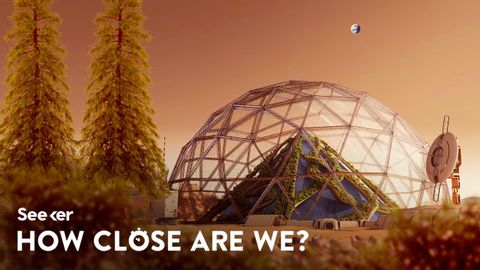火星のテラフォーミングはどこまで近づいているのか? (How Close Are We to Terraforming Mars?)
林宜悉 が 2021 年 01 月 14 日 に投稿  この条件に一致する単語はありません
この条件に一致する単語はありませんUS /ˈʌltəmɪtli/
・
UK /ˈʌltɪmətli/
- v.t./i.出場する;計算する;思う;思う
- n.姿 : 体形;数字;人物像;図表;著名人;姿の輪郭;数字
- n. (c./u.)条件;期間;学期;用語;関係;項;妊娠期間;任期
- v.t.称する
US /ɛnˈθuziˌæzəm/
・
UK /ɪnˈθju:ziæzəm/
エネルギーを使用
すべての単語を解除
発音・解説・フィルター機能を解除

